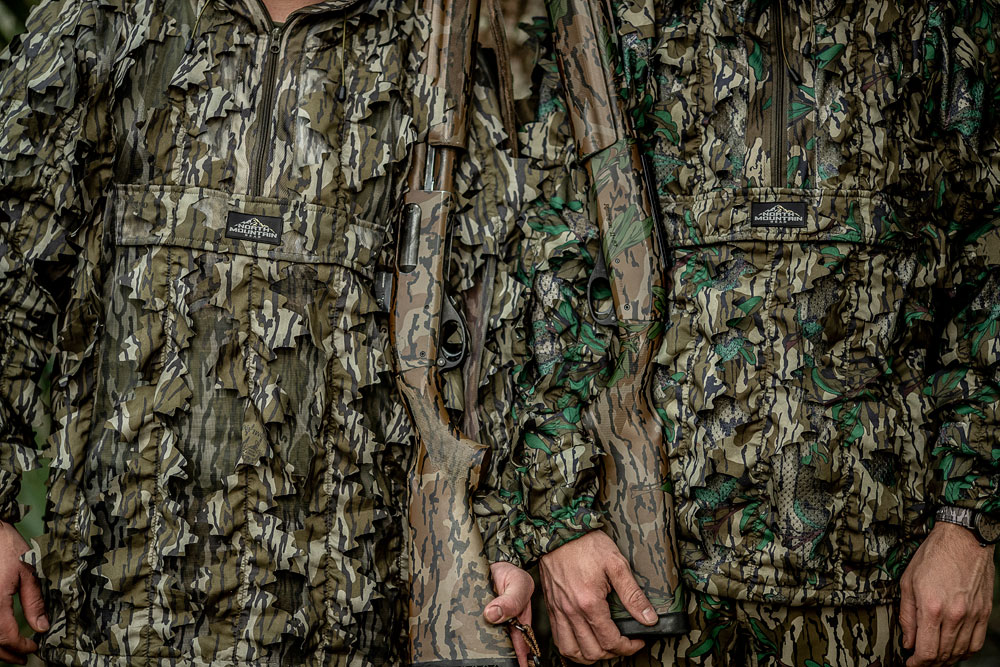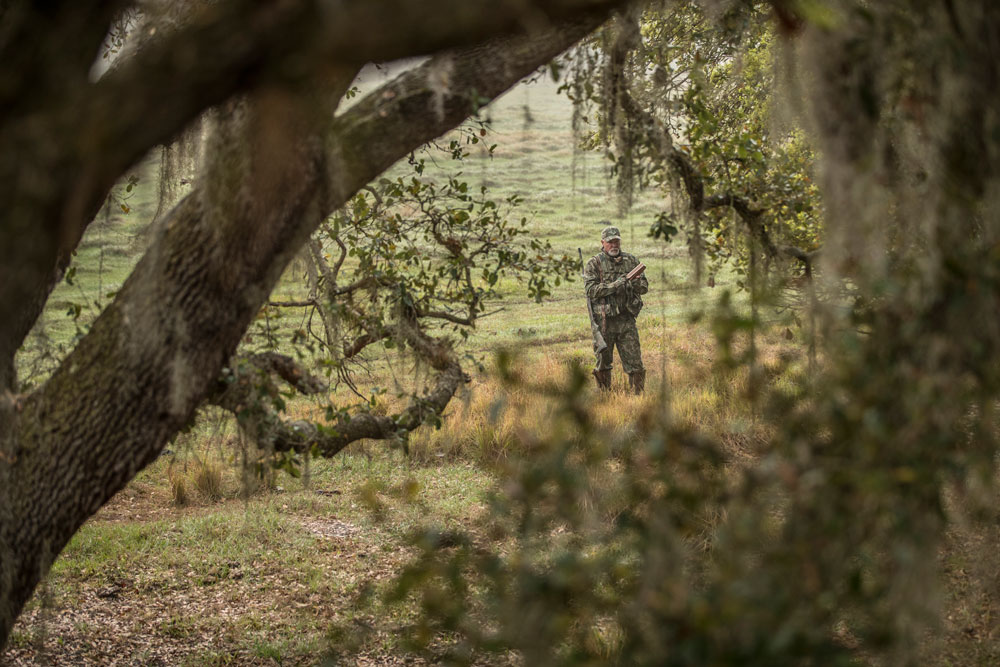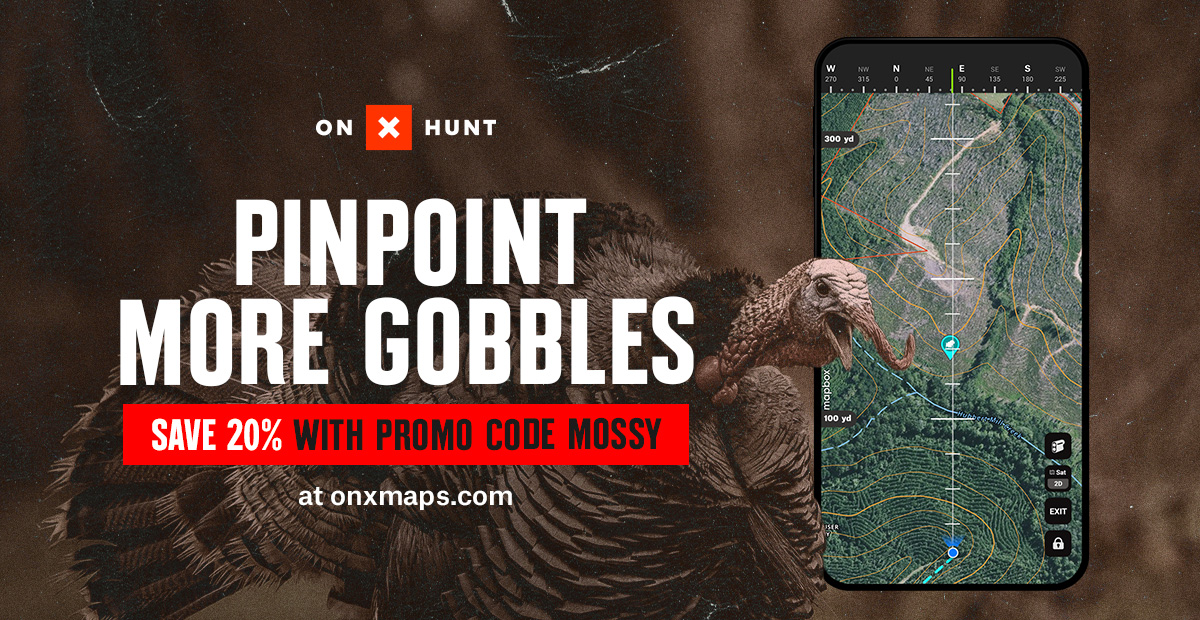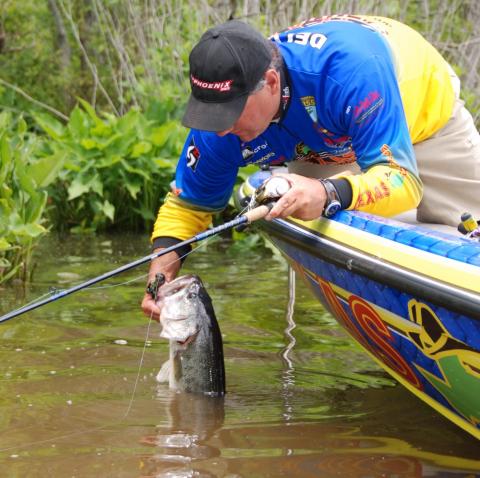provided by John E. Phillips
Ronnie “Cuz” Strickland has been hunting wild turkeys for more than 50 years. When he first started working as a videographer for Mossy Oak, Cuz was traveling, filming and calling turkeys for about 72 days a year for many years. Today Cuz is Senior Vice President of Media Services at Mossy Oak in West Point, Mississippi, and still is one of the best turkey hunters ever.
Many turkey hunters look like pack mules because they carry so much gear into the woods to try and help them take gobblers. But I like to hunt light, and the older I get, the lighter I travel when turkey hunting.

BEST CAMOUFLAGE FOR TURKEY HUNTING
Camouflage is a critical ingredient for successful turkey hunting, and Mossy Oak Bottomland is always a great choice. I often like a pattern with a little bit more green in it like Mossy Oak Green Leaf or Obsession. However, if you’re a northern hunter, the woods may not have any green in them in the early season, so you may choose Bottomland. Camouflage is a big deal in turkey hunting because to get a turkey really close, you need to be almost invisible. When you’re turkey hunting, you don’t have to have a pop-up blind or a half blind, you just have to look like the woods and be camouflaged from the top of your head to the bottom of your boots – including a camo head net, camo gloves, camo pants and shirt and camo boots. The legs of my turkey-hunting pants are longer than the pants I normally wear. Then when I sit down, my pants legs won’t come up and show the tops of my boots and socks and alert a turkey of my presence.
BEST TYPE OF TURKEY VEST
You also need a quality turkey vest that includes a comfortable cushion to sit on, lots of pockets and a big game bag in the vest’s back to carry your turkey. A cushion is so important because when you sit down to call a turkey, you may be sitting there for a long time. If you happen to sit on a root or a pebble, you won’t be able to sit still for very long. So, the more comfortable you can get, the longer you can sit still and not move. You need lots of pockets in your turkey vest for shells, insect repellant, a wide variety of calls, a bottle of water, a sandwich, some snacks, pruning shears and maybe even a folding saw that you can use to create a natural blind.
BEGINNER FRIENDLY TURKEY CALLS

My number-one recommendation for a call for a beginner is a single-side box call. You can go to YouTube on the web and type in, “How to Use a Box Call to Call Turkeys,” and there will be hundreds of videos available to teach you everything you need to know about calling turkeys with a box call. Those videos will show you how to chalk your box call and prevent it from squeaking when you’re walking through the woods.
Personally, I’m a volume turkey caller; I want a call that’s soft enough to bring in a turkey 60-yards away and just out of sight, but strong enough that I can call loudly on it, and a turkey can hear it from 200 yards away in blowing wind. One reason, like I said yesterday, that calling turkeys is a little overrated, is because if you’ve done a really good job of scouting, and you know where the turkeys are, all you really have to do to take a turkey is be at the place before the turkey gets there.
Often, newcomers to the sport of turkey hunting will tell me, “I don’t believe my calling is good enough to bring in a turkey during hunting season.” Well, I’ve seen people take turkeys with some of the worst sounding calls you’ve ever heard, and I’ve also heard turkey hens make some of the most god-awful calls you’ll ever hear, and a gobbler will walk right to the hen.
BEGINNER FRIENDLY TURKEY HUNTING GUN SET UPS
I like to shoot a 3-inch, 20-gauge shotgun, and I’m strongly considering the possibility of using a .410-bore turkey gun. I like a quality turkey choke, like JEBS turkey choke, that drastically will increase the range of your shotgun and Apex turkey loads, so a person can kill a gobbler at 50 yards. I don’t like to shoot that far, but I know what my gun will do.
In today’s turkey world, the days of shooting a 10-gauge turkey shotgun with No.4 shot are over. Apex Ammunition has titanium in it. Instead of shooting No.4 or No.6 size shots, I shoot No.8 or No.9 shot. That Apex shot penetrates a turkey’s head or neck area much better than the lead shot I once used. I especially like my 20-gauge shotgun because it’s lightweight, easy to carry and will down a turkey as far as I want to try to shoot one.
Another advantage that a beginner turkey caller can have in choosing a shotgun to shoot is having a turkey scope. I’ve called-up turkeys for other hunters for five decades, and I’ve seen them miss the turkeys they’re trying to take. One of the most exciting events in all of hunting is watching a wild turkey gobbler walk in to where you’re sitting and come within 30 yards or less of you. Most turkey hunters get so excited that they don’t aim properly before they squeeze their triggers. I’ve got a 1.5X turkey scope on my 20-gauge turkey gun. When I take new hunters who never have bagged a turkey before hunting with me, I ask them to use my shotgun. They can look through that scope and put the crosshairs right on the spot of the turkey’s neck that they want to shoot.
If the gun you’re shooting doesn’t have a camo finish on it when it comes from the factory, you may want to get some camouflage tape to tape all parts of your shotgun to totally camouflage it just like you are. Turkeys have keen eyesight and can see anything shiny when they’re moving through the woods. For that reason, you want to make sure that not only your gun is camouflaged, but that you’ve pulled your sleeves down, so that the turkeys can’t spot a glint off your watch.




























